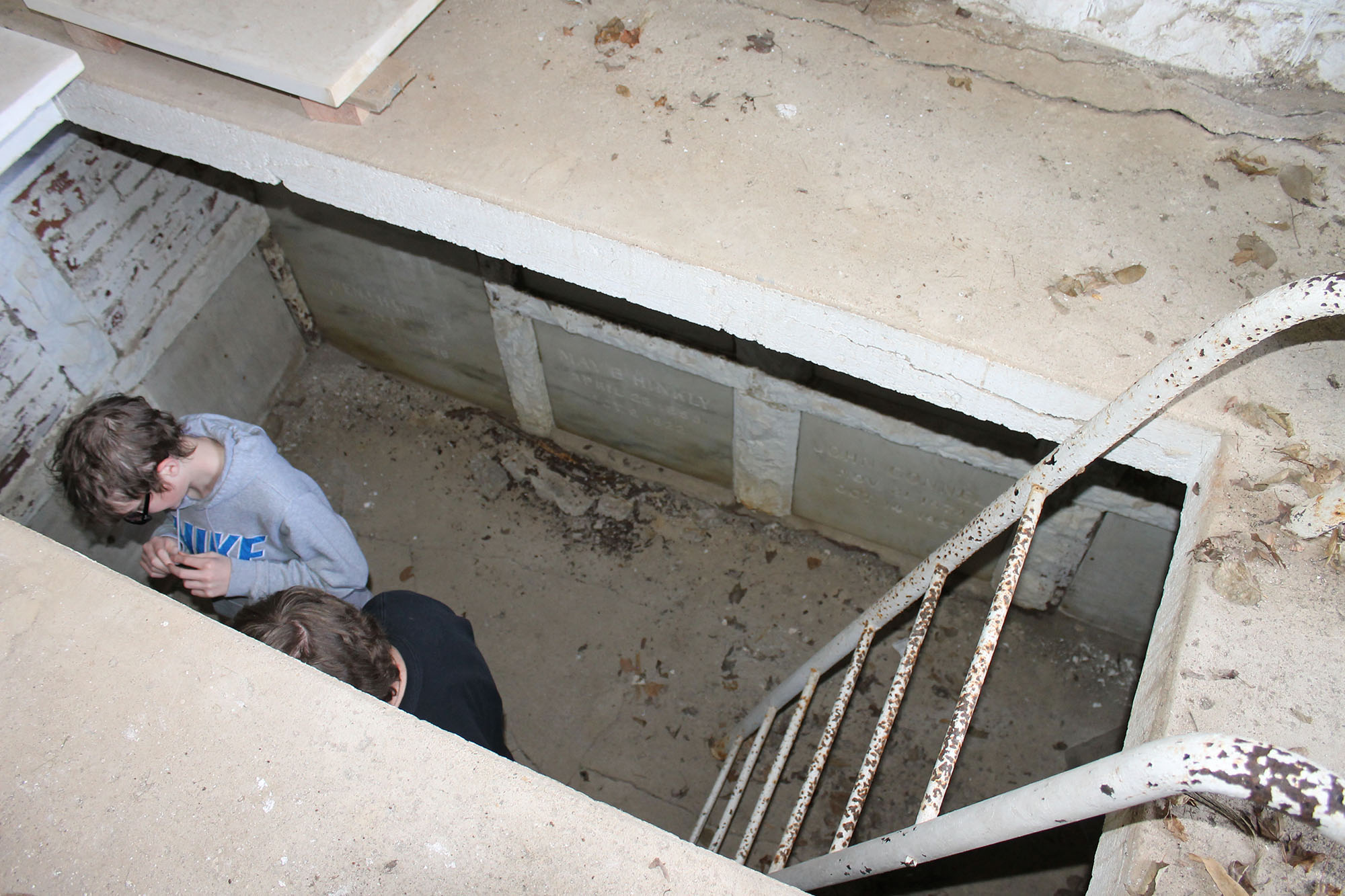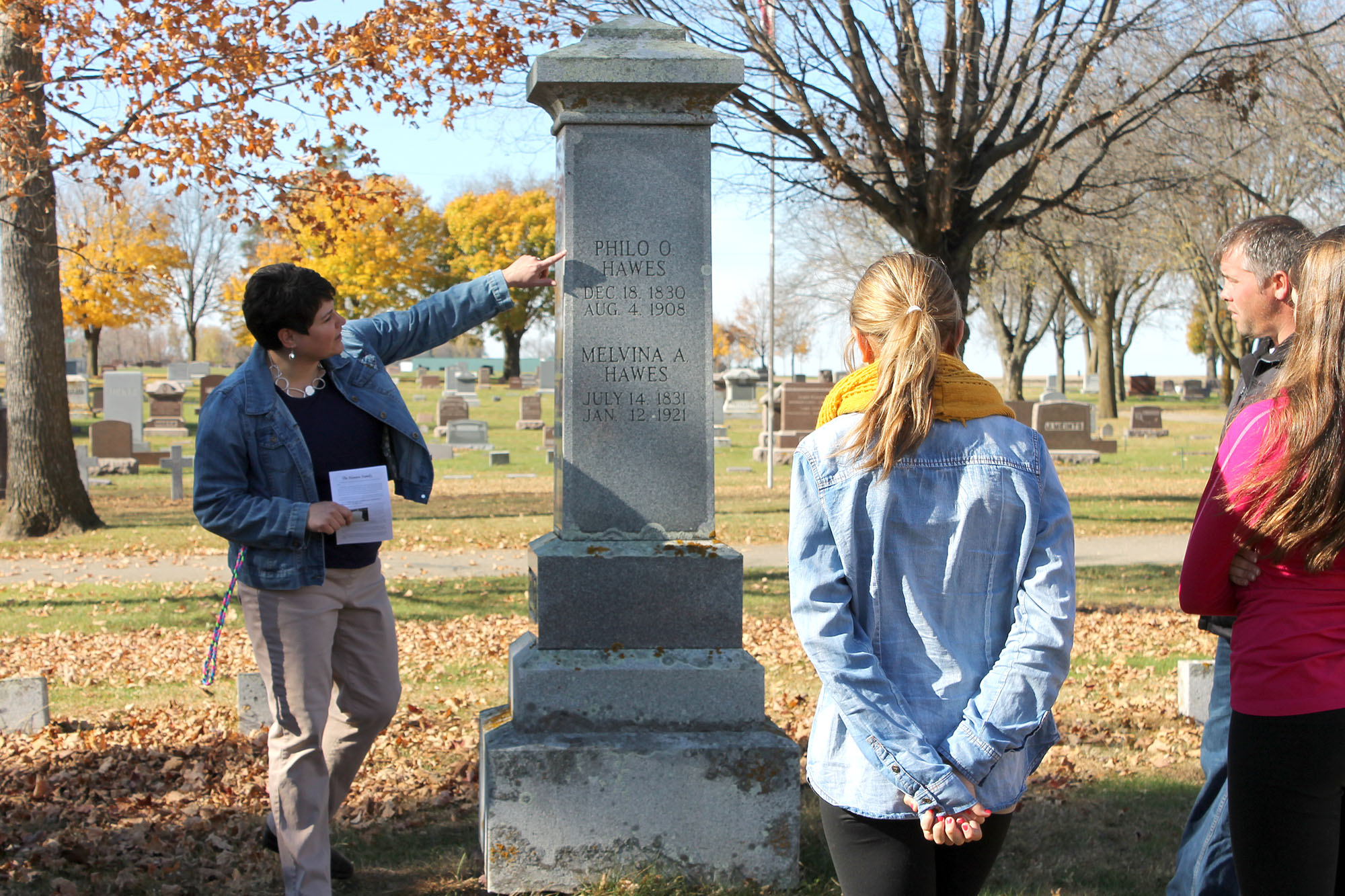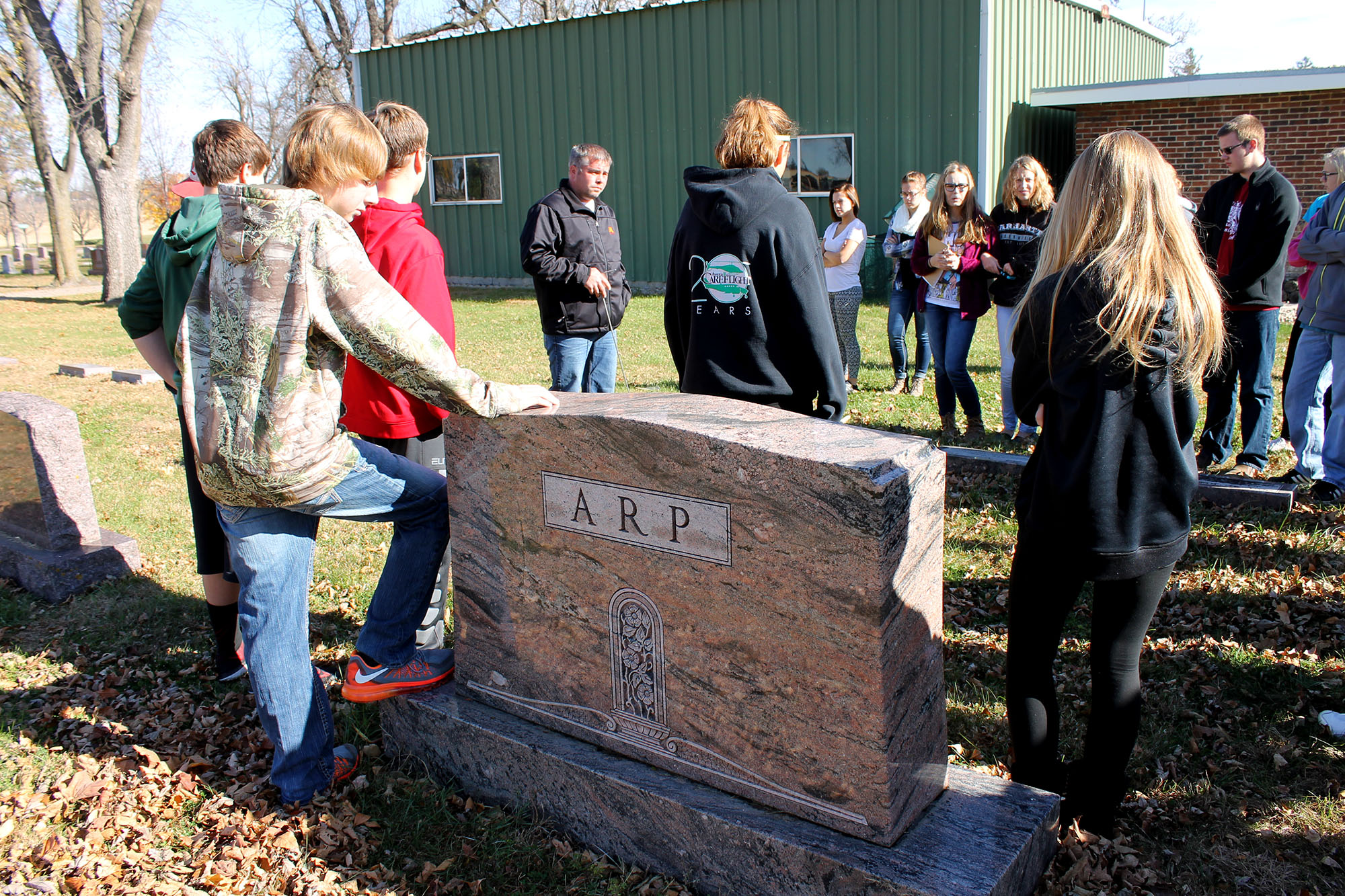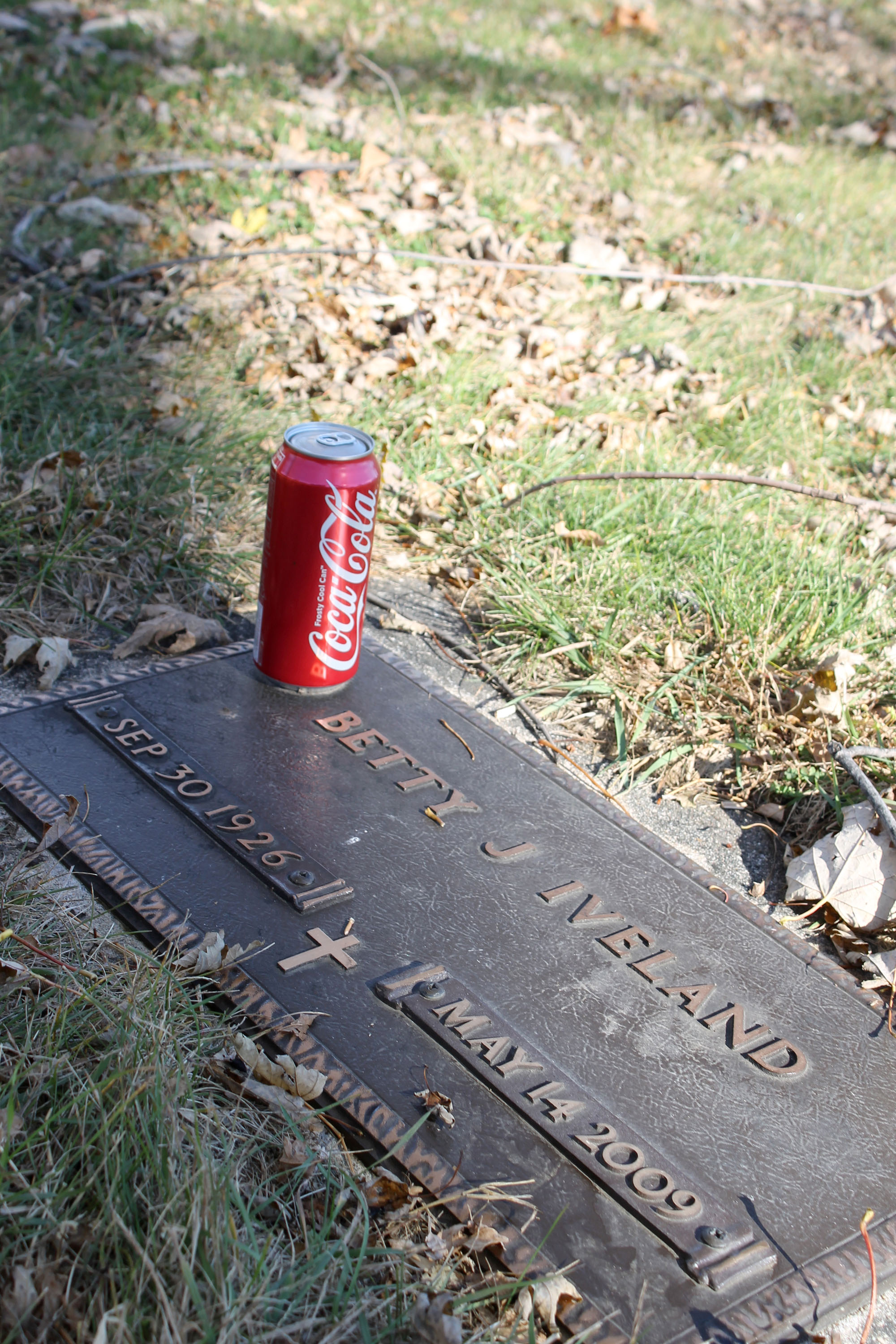 ,
,  ,
,  ,
, 
For more than three decades, Luverne’s high school students have boarded school buses and made the short field trip to the Maplewood Cemetery just west of town.
The field trip on Monday, Nov. 2, by the ninth-grade class continues an activity begun by retired instructor Katie Hemme.
“I thought, based on my own experience, that kids should be exposed to a funeral,” said Hemme, who saw lesson potential in the 35-acre funerary grounds offered in the late 1970s.
Hemme’s own father died in the mid-1970s and she said as an adult, the experience left her shaken and stunned as she looked at coffins and visited a funeral home and cemetery for the first time.
In a classroom setting, Hemme said the tour gives students a chance to ask questions without the emotions surrounding a loved ones death.
“After we started the tours, the vandalism decreased,” she added.
Today the semester-long ninth-grade health course, which includes a three-week death and dying unit, is taught by Kari Lais.
Through her curriculum, the field trips to Maplewood Cemetery have also evolved into a history lesson of Luverne.
“The superintendent of the cemetery gives us a tour that includes the history, different types of burial and some of the historical sites and graves,” Lais said.
On Nov. 5, cemetery superintendent Billy Cowell allowed students to enter the Maplewood Chapel, built in 1905, and peer down the hole cut in the chapel floor to the basement. During the winter months, he said caskets were lowered into the basement storage room, where they stayed until spring when the ground thawed.
Cowell also showed students the headstones of some of the people buried in Maplewood since it was established in 1886.
One stop was the headstone of the oldest person buried in the cemetery, Mary Arp, who lived to be 112 years old. At the Hanson family plot the students were told of the mother who shot her five children because she was scared of the influenza epidemic.
Students also viewed the mausoleum, a type of burial Cowell said the cemetery association no longer allows, and they entered the Hinkly tomb, where family members are buried in the ground with steps inside the tomb leading down to the graves.
Before students left the cemetery, Lais pointed to the burial marker of Philo Hawes, Luverne’s founder, as well as the family markers of Brown, Crawford and Barck, whose names are now familiar city streets and avenues.
In lessons leading up to the cemetery tour, students discussed topics surrounding death and dying.
“We do talk about the grief process and how people handle it differently,” Lais said.
The tour of the funeral home is part of the 11th-grade health class, she said.
Remembering loved ones
When Luverne High School’s ninth-grade students toured Maplewood Cemetery on Monday, Nov. 2, they learned how loved ones are remembered.
Cemetery superintendent Billy Cowell explained besides grave markers and the leaving of the traditional bouquet of flowers or a plant, family members and friends leave various items of remembrance at the cemetery.
Items include power chips, a deck of playing cards or small toys. Items like these, he said, should be left in their place out of respect for those who are grieving.
One item, a large can of soda pop, was sitting on the top left-hand corner of Betty Iveland’s grave marker during the student tour.
Daughter Mary Jo Graphenteen, a teacher at Luverne Public Schools, said, “We always put one there.”
Prior to Iveland’s death in 2009 at the age of 82, she drank Coca-Cola regularly. The carbonated beverage especially became a drink of choice prior to her mother’s death and a similar carbonated drink for her sister, Sharon, prior to her death earlier this year.
Graphenteen remembers her mom would utter the Coke company’s slogan, “Ahh … the pause that refreshes,” after taking a sip. Her sister also uttered the same reaction.
“The bubbles made them feel life,” Graphenteen explained.


